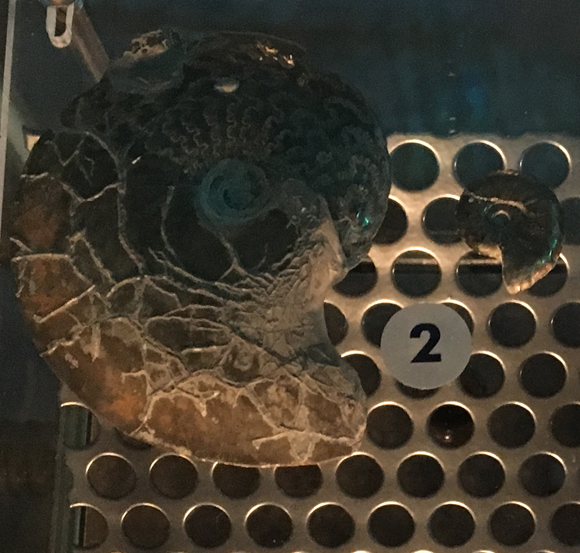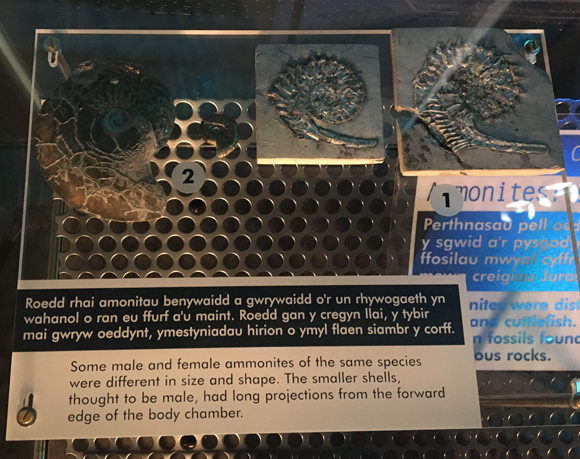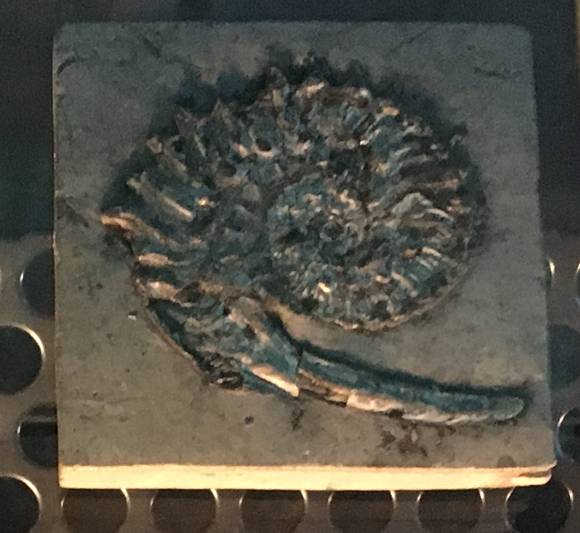Male and Female Ammonites
The weather might be most unpleasant for much of the British Isles at the moment, but soon it will be the summer holidays and many of the beaches of Britain will be crowded by fossil hunters keen to add to their fossil collections. At numerous sites, fossils of ammonites can be found. The shells of these widespread, diverse and specious cephalopods adorn many amateur fossil collections. Here at Everything Dinosaur, we have hundreds and hundreds of specimens. Although, lots of people find ammonite fossils, in our experience few are aware of the amazing sexual dimorphism exhibited by the Subclass Ammonoidea.
Female Ammonites were Larger than Male Ammonites

Picture credit: Everything Dinosaur
Ammonite Fossils – the Macroconch and the Microconch
The fossilised shells of ammonites often preserve remarkable detail, but the size of the specimen found can also help to tell the boys from the girls. It is believed that shell size can help scientists determine male and female specimens in some species of ammonite. As far as we at Everything Dinosaur are aware, ammonites exhibited sexual dimorphism, that is, the females of a species grew to be much bigger than the males (see picture of ammonite fossil shells above).
The microconch (male) is smaller and wider, whilst the macroconch, believed to represent the female of the species is much larger, an adaptation to accommodate egg production. This dimorphism is found to today in the close relative of ammonites – the nautilus.
Ammonite Fossil (Male)
Picture credit: Everything Dinosaur
Male and Female Ammonites
Some male and female ammonites of the same species had different sized and different shaped shells. There is evidence to suggest that the in some species, the microconch, representing the male had long projections from the forward edge of the body chamber. This could have helped to protect the animal, but they may have signalled maturity and fitness for breeding. Perhaps these projections were used in intraspecific conflict over mate selection.
Most ammonite fossils found in the UK represent creatures that lived during the Jurassic, although a number of sites, particularly in southern England, such as the beaches around Folkestone in Kent, yield evidence of Cretaceous ammonites. Most ammonite fossils found are relatively small with only a few specimens exceeding 25 centimetres in diameter, but fragments of the shells of much larger animals can still be found.
Ammonite Specimens on Display

Picture credit: Everything Dinosaur
Dangerous Cliffs
The recent heavy rain has led to a number of cliffs becoming unstable. Everything Dinosaur has posted up helpful information and advice warning prospective fossil hunters to stay clear of cliffs. Many cliffs have become saturated with water and the risk of substantial rock falls and landslides is high in many coastal locations. Whether looking for ammonites, or indeed any other fossil for that matter, please take care, heed local warnings and don’t stray too close to cliffs, there are plenty of fossils to be found on the foreshore.
If you are looking for ammonite models and other prehistoric animals: Everything Dinosaur.







Leave A Comment